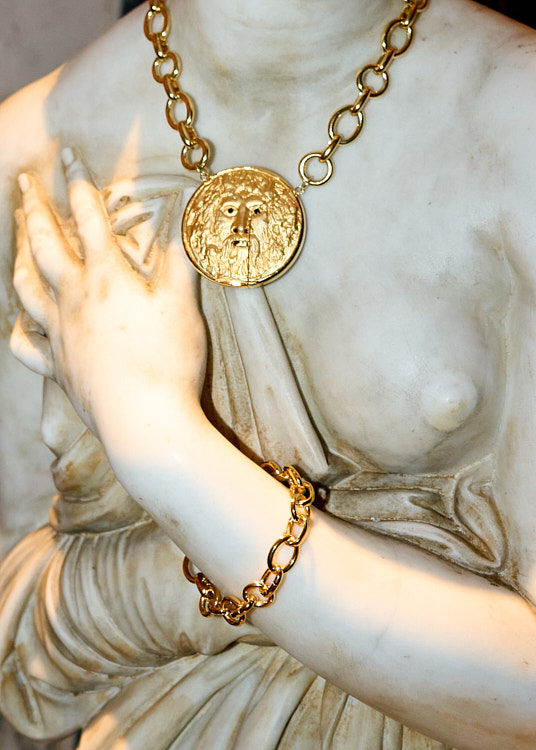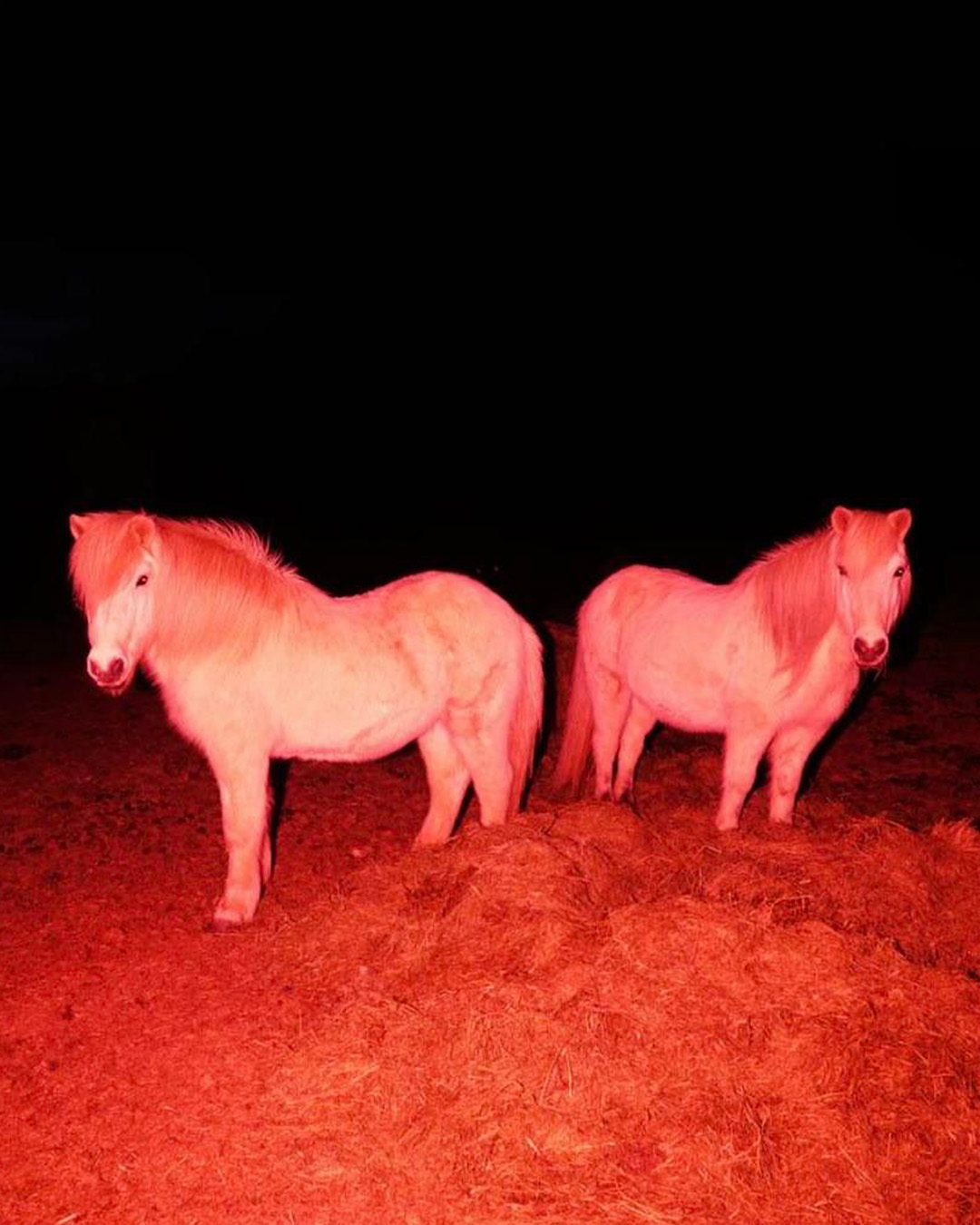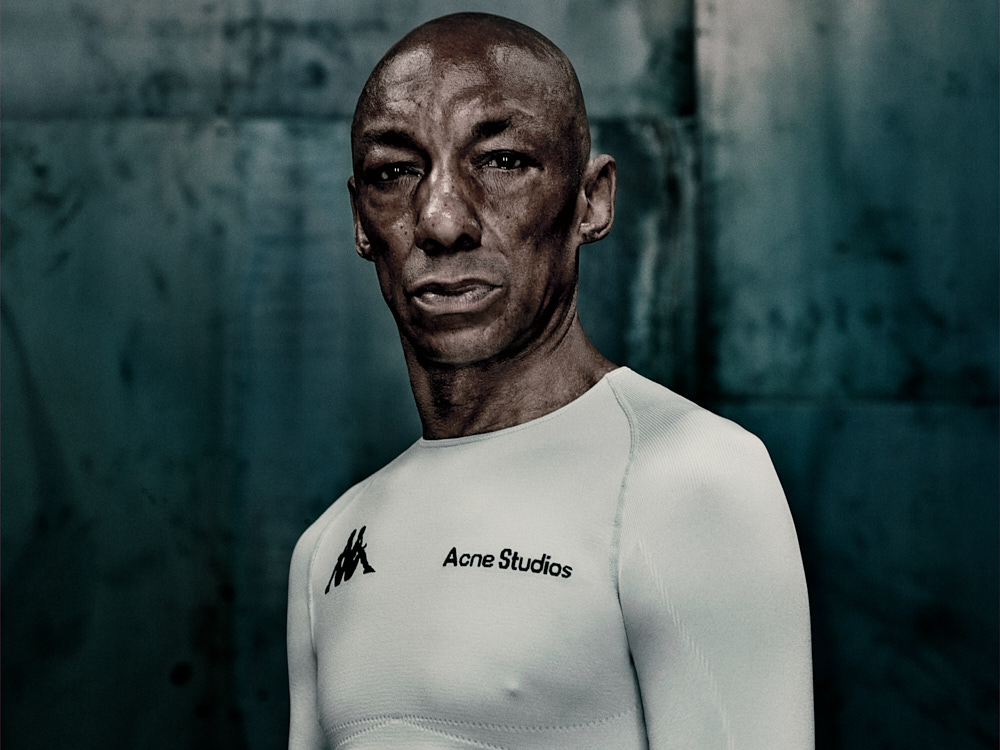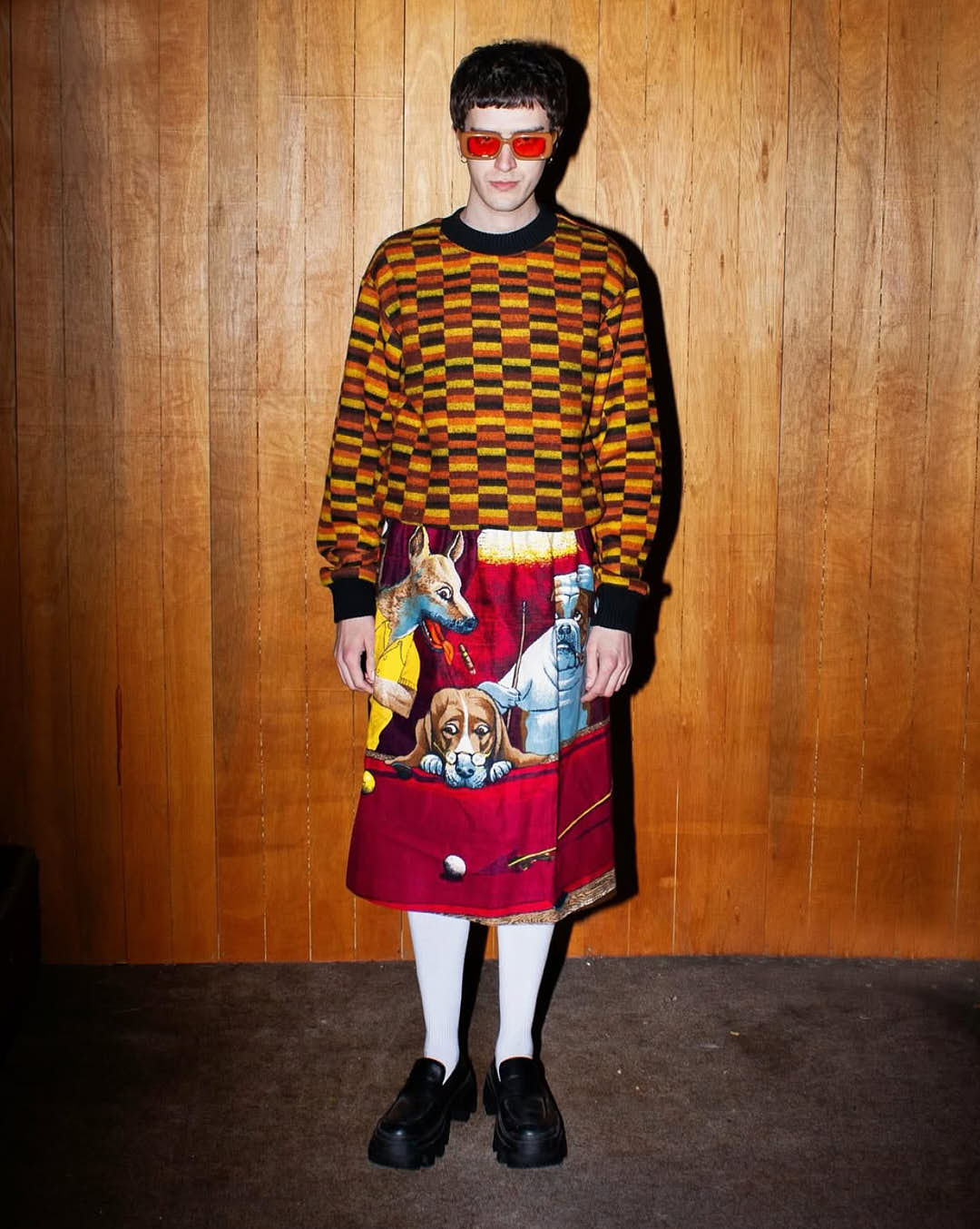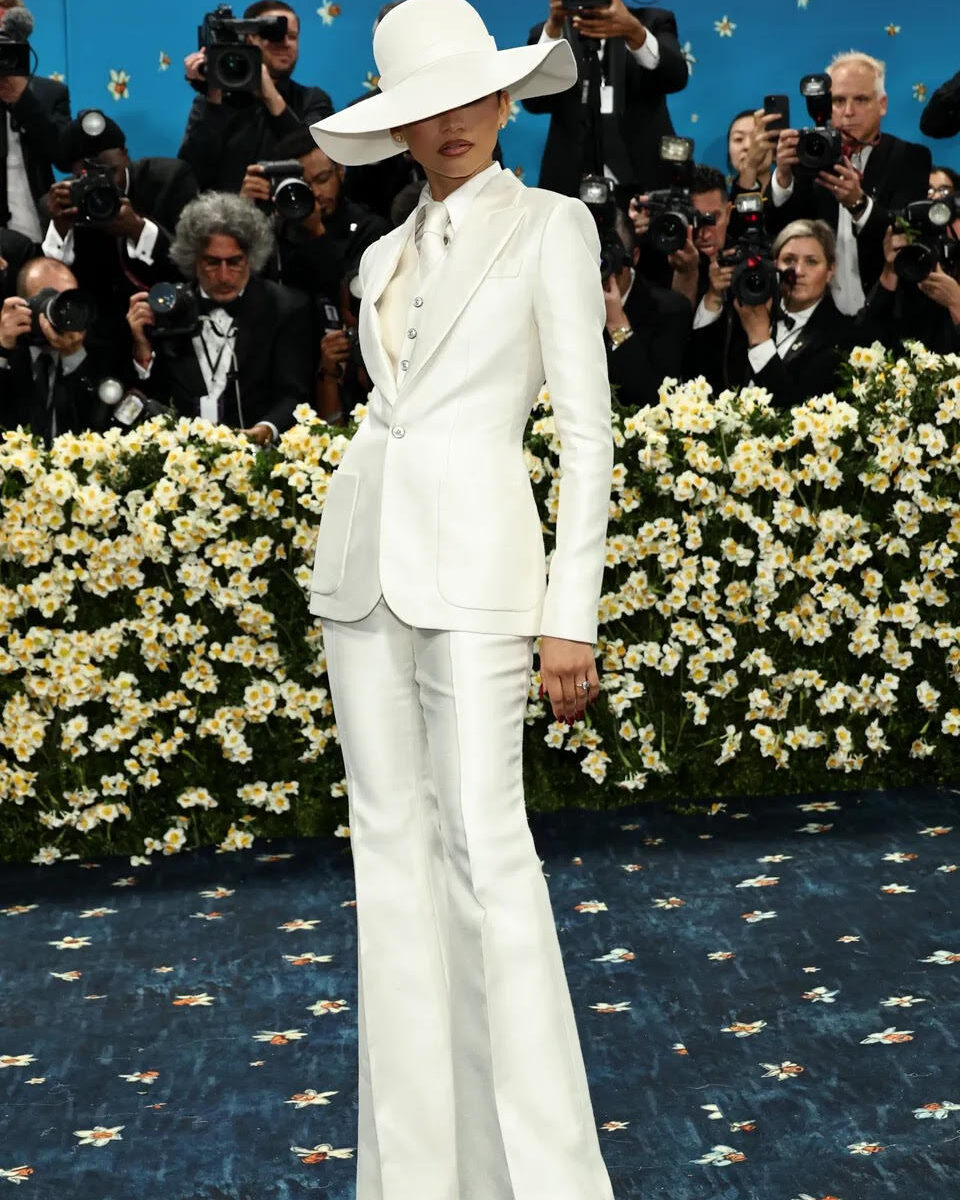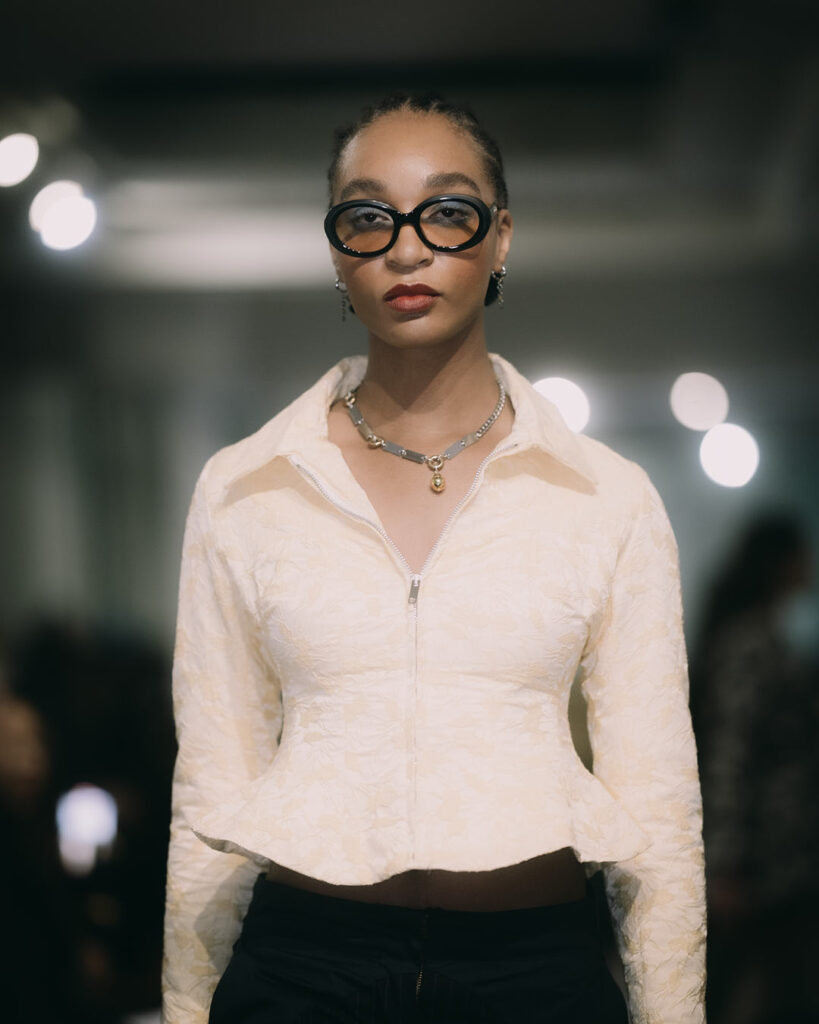
Space-Age and Subversion in Unproductive Thinking: An Interview with Naomi Hart
Written by Penelope Bianchi
Edited by Lola Carron
Photos by @rosslynphotography
Outer space, sliced geodes and retro-futurism–no, this is not the set of a Kubrick 1960s sci-fi movie; they are elements that distinctly define Naomi Hart’s AW25 collection, Unproductive Thinking, debuted at London Fashion Week in February. The catwalk mirrors the makings of a film, starting with a model who opens a wardrobe to select a matching jacket for her pale canary yellow outfit, examining herself in the mirror.
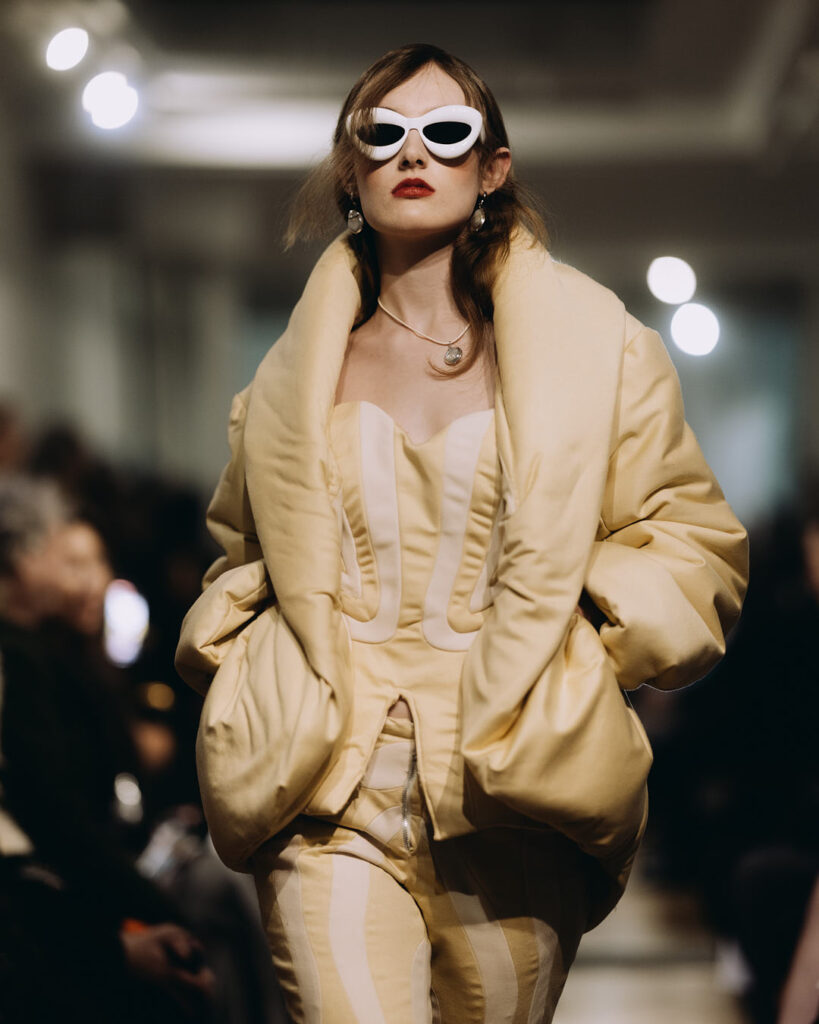
The audience witnessed the models’ day-to-night transformations, from ‘sunlit creams to crimson, black, and burgundy shades’, in an almost Truman Show-like way, observing their every move–from sitting on couches to reading–with an eerie intimacy. Midnight, the Stars and You (1934), famously the central tune in The Shining (1980), played hauntingly in the background as the first of two carefully selected tracks, casting a shadow of doubt on my previous statement – perhaps we were on a Kubrick set after all.
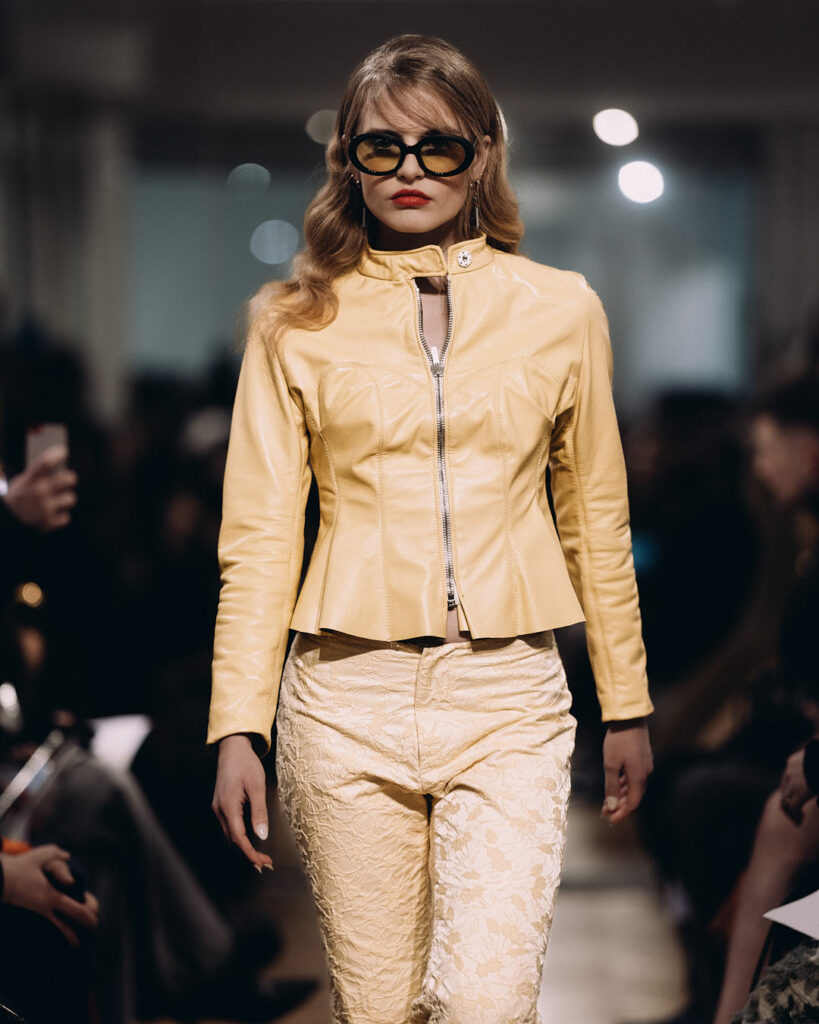
Hart’s collection showcased a stunning interplay of natural and futuristic motifs, highlighting her signature theme of man-made versus organic—an ode to André Courrèges’s modernist couture. The garments themselves—a fusion of sharp, tailored lines and fluid, organic forms—played with perception, challenging the audience to see beyond the surface, much like the dreamlike Lynchian dramas that inspire the designer. Dramatic flares and sculptural dresses were enhanced by marbled fabrics that mimic the complex internal structure of geodes–outwardly ordinary stones that reveal a rich, colorful interior, embodying the collection’s theme of hidden depths. Leather, a pivotal element, brought a rebellious, youthful spirit to the sophisticated
silhouettes, adding toughness and texture that echoed the biker culture Hart frequently channels. The utilitarian yet elegant pieces, including quilted puffer jackets and floor-length coats, featured unique touches like heart-shaped necklines and carmine embellishments. Complementing this retro-futuristic look, the models wore 1960s-inspired space-age sunglasses—round retro lenses, oversized, and thick frames, enhancing the enigmatic aura of the models.
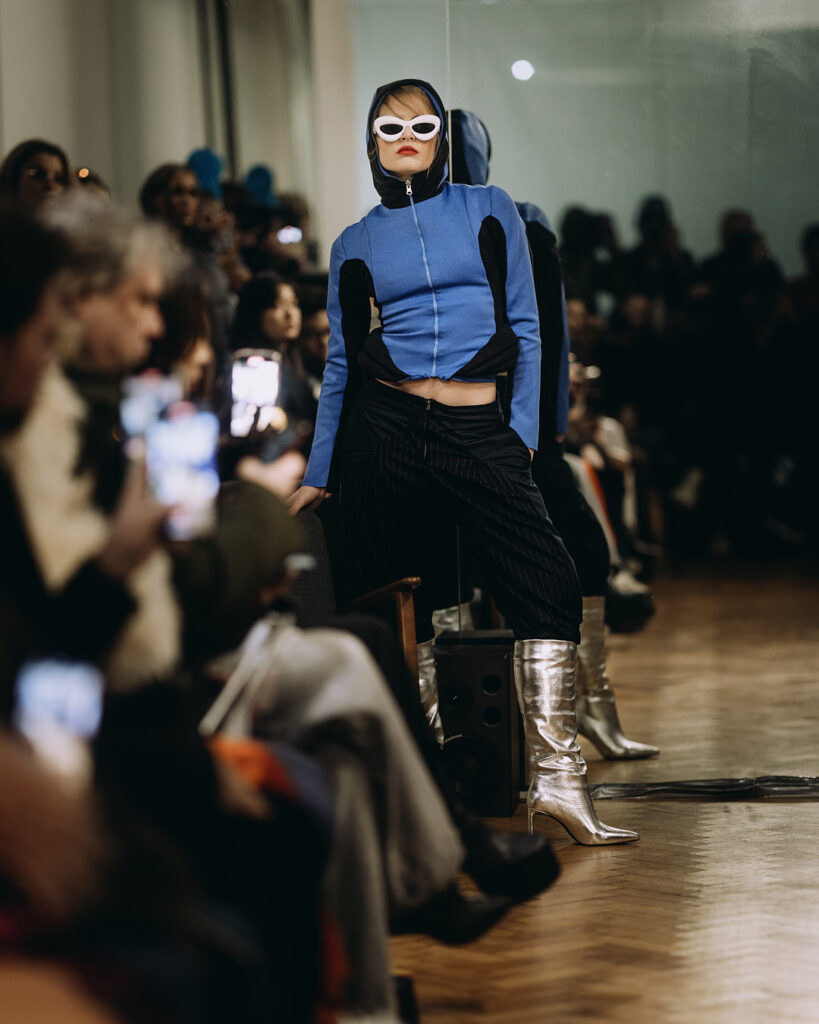
Her myriad influences could easily overwhelm; from Courrèges’ modernism and space-age aesthetics to the youthquake movement, along with David Lynch’s surrealist landscapes and
biker-girl chic, it’s easy to get lost—or as she puts it, ‘go down a rabbit hole.’ Yet Hart’s collection is remarkably cohesive; each fabric choice, silhouette and colour feels meticulously calculated, resulting in a lineup that’s bursting with references yet surprisingly uniform in its execution.
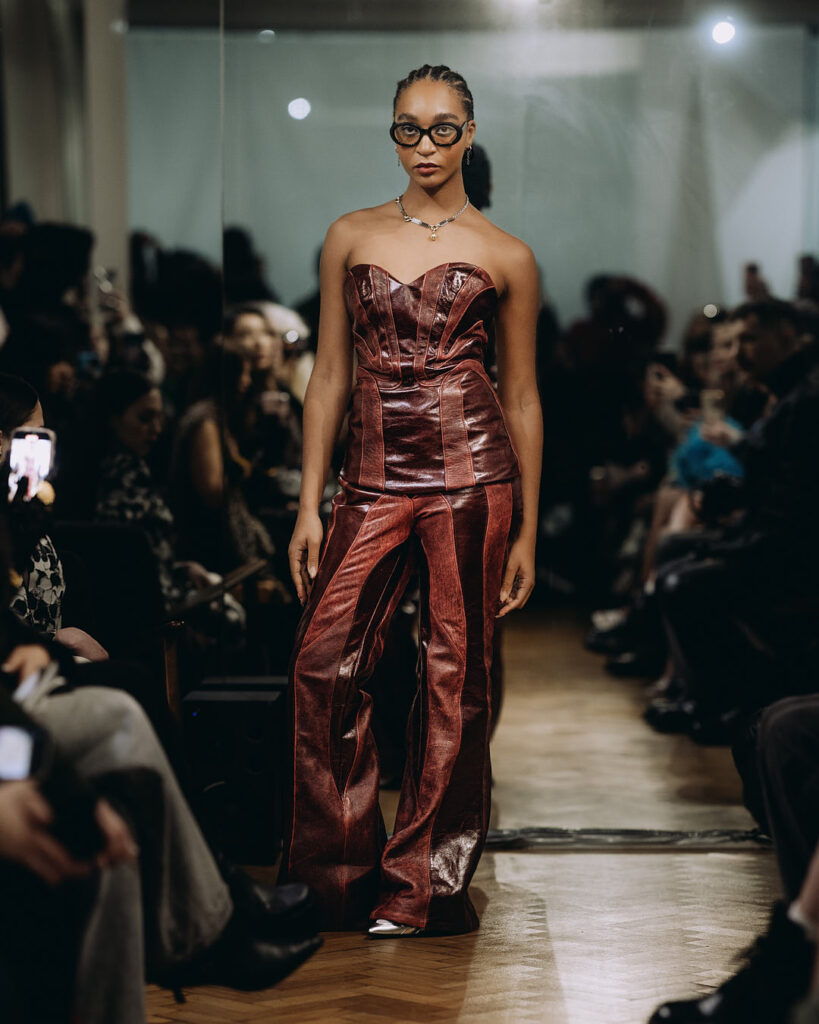
The Cold Magazine caught up with Naomi Hart to explore the rich tapestry of influences and the creative force behind her collection–from the philosophical undertones of productivity and creativity to her deliberate integration of surrealism and the transformative use of materials, Hart opens up about the inspirations and personal influences that shape her unique approach to fashion.
–
The COLD Magazine (CM): What is the core philosophy behind Unproductive Thinking? What inspired this collection, and which themes were you particularly interested in exploring this season?
Naomi Hart (NH): “Unproductive Thinking” challenges the conventional idea of productivity and creativity; in a world that prioritises efficiency, output, and perfection, I wanted to explore the idea that true innovation sometimes comes from moments of pause and wandering thoughts–unproductivity. This philosophy reflects my own creative process–where my most meaningful breakthroughs often occur not during active creation but in moments of reflection, away from the pressure of deadlines and expectations.
Yet, interestingly, for me the pressure of imminent deadlines ultimately forces these preconceived ideas into fruition, tapping into the unconscious mind where there’s no room to overthink, allowing a raw, unfiltered emergence of creativity. This collection embraces the nonlinear nature of creativity, allowing the subconscious to lead without forcing ideas – the beauty of unstructured thinking opens the door to new possibilities and invites a more fluid, organic approach to fashion.
CM: Your use of David Lynch’s Strange and Unproductive Thinking (2011) as both the soundtrack and the namesake of your collection stood out to me. Lynch was a pivotal figure who transformed our perception of reality with his surrealist creations; he broke from conventional thinking, reminiscent in many ways of your own approach to design. In light of his recent passing, what led you to this choice of song and how does it link with both the thematic and visual aspects of your designs?
NH: Lynch’s work, known for its dreamlike qualities and exploration of the subconscious, aligns perfectly with the ethos of my collection. His films challenge the viewers’ grasp of reality, encouraging a deeper dive into surreal, often darker aspects of the human psyche.
My collection seeks to mirror these qualities by challenging conventional fashion norms, introducing elements that encourage viewers to question and rethink their perceptions. Lynch’s influence is evident in the abstract forms and unexpected materials in my designs, which aim to create a dreamlike state where reality bends and familiar forms are reimagined.
CM: There seems to be a significant overlap between the realms of fashion and music in your work. Where do you see these intersecting?
NH: Fashion and music are inherently connected as forms of artistic expression that reflect cultural and personal identities. In my shows, music is not just a background element but a narrative force that enhances the thematic and emotional depth of the collection. The first song in the show, Midnight, the Stars and You (1934), is supposed to sound a little bit eerie, sort of like when a film starts with images of empty streets–it gives that feeling of suspense. Then the song switches to the Lynch one; for this collection, the music helps set a mood that aligns with
the visual narrative, guiding the audience through a transformative experience from day to night, echoing the life’s rhythm and emotional shifts of the models portrayed in the show.
CM: I noticed the transition in your collection from daytime to nighttime through your use of colour, going from pale yellow to darker tones. Can you expand on this?
NH: Yes exactly! The transition uses colors to convey time passage—starting with pale yellows symbolising day and moving into darker tones like burgundy and navy for night. The first models came out, took a coat out of the wardrobe, and put it on. As the audience, we get a weird sense of looking into her world – we watch in unease as she goes about her day. Other models follow, sitting down on a couch and reading; we observe them as the scene switches to night time, when the red leather comes through. This progression enhances the narrative, creating a voyeuristic experience where the audience feels like outside observers stepping into a constructed reality.
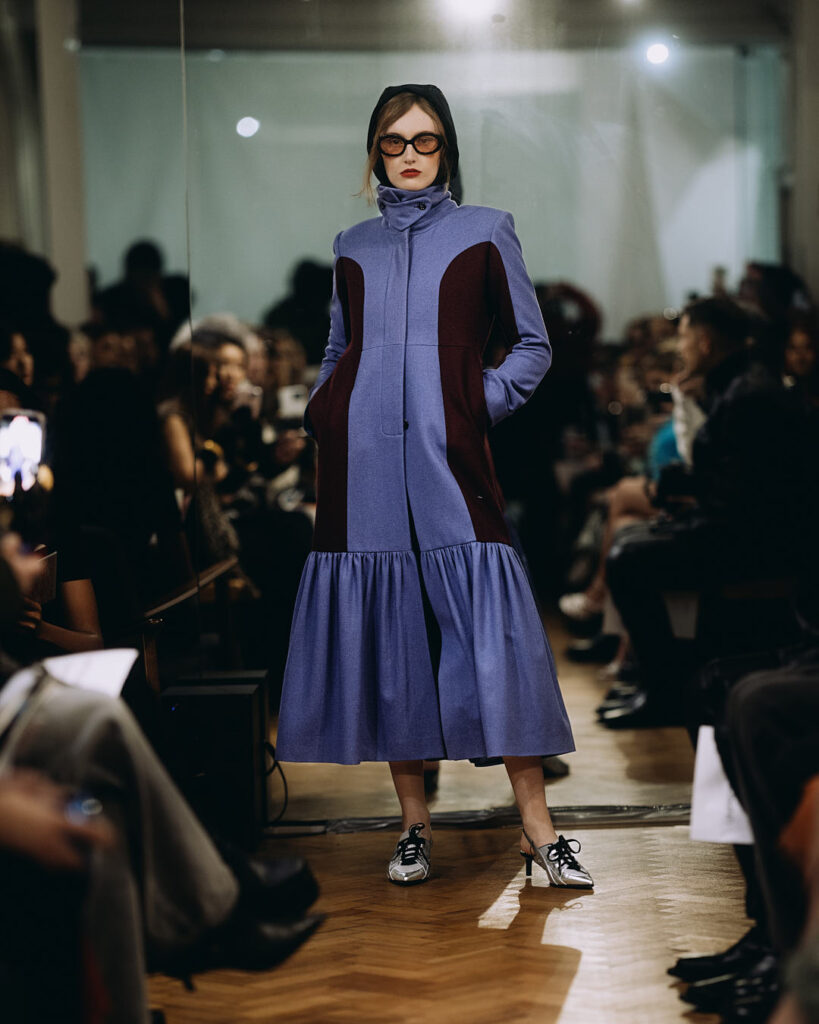
Surrealism may shape the collection’s mood, but it’s the tension between internal and external worlds—rural vs. urban, subconscious vs. conscious—that appears to give it depth.
CM: How did growing up in the Peak District influence your creative process and the aesthetics of your designs?
NH: The natural beauty of where I grew up significantly influenced my work. As a child, I was always creating—painting, drawing and sketching everything around me. Then I came to the
city, where everything is so manmade and a completely different aesthetic; this blend of nature and the urban aesthetic of the city informs my designs, where I strive to merge these two worlds rather than choosing one over the other.
CM: How did you transition from studying art to fashion design?
NH: When I studied art in college, I was always experimenting with various media; I drew on wood and created sculptures on mannequins using paper and clay. This exploration naturally evolved into working with textiles, leading me to view the 3D form as a canvas, which brought me to London to develop my technical skills in design.
CM: This collection incorporates materials like leather and neoprene. What was your thought process behind these choices?
NH: The choice of materials was driven by a desire to experiment with form and silhouette while maintaining a focus on wearer comfort and empowerment. Neoprene, with its sculptural yet flexible properties, allows for the creation of dynamic shapes that conform to and enhance the body without constraining it. Leather adds a textural contrast that speaks to the themes of rugged individualism and personal strength that are recurrent in my collections. These materials are chosen not only for their aesthetic and functional qualities but also for their ability to convey the collection’s underlying themes of empowerment and transformation.
CM: The ‘Biker Girl’ aesthetic, inspired by your upbringing, is prominent in your designs. How does this contribute to the story you want to tell through your garments?
NH: This aesthetic is a narrative thread that connects my personal history with the broader themes of my collections; it represents freedom, strength, and the thrill of the open road, which parallel the liberating aspects of creative expression in fashion. Importantly, it helps me develop my own signature within my designs without getting too caught up in the themes I’m exploring. It helps anchor my designs, providing a consistent thread that ties my various inspirations together into a coherent visual and thematic narrative.
CM: You’ve mentioned exploring the conscious vs. the subconscious in your designs. How do you employ the principles of Surrealism to challenge conventional fashion norms?
NH: Surrealism offers a framework to explore and express the fluid boundaries between reality and the subconscious. In my designs, I employ this by integrating elements that might seem familiar at first but reveal deeper, more complex meanings upon closer examination. This approach allows me to challenge the viewer’s expectations and encourage a deeper engagement with the garments as pieces of art that question and expand the conventional boundaries of fashion.
CM: The scarlet taffeta coat was originally a toile [mock-up model of a garment] that was deconstructed and refined for the runway. What is your approach to sustainability in general?
NH: Yes, it was just a toile and I ended up loving it! You can see the seams at the back of it because I cut it open to make it wider and then put another piece underneath; obviously, that sort of thing is never something that you would tend to show but it just worked really well. In terms of sustainability, everything I do is made-to-order; because I see my work as art, it doesn’t have to be perfect or structured, I like to celebrate the beauty of imperfections inherent in the creative process.
CM: Are there any themes you are eager to explore in future collections?
NH: I’m always drawn to themes of nature and the contrast between organic and manmade elements. My future collections will probably explore these contrasts more, however I usually allow the inspiration to take over as it comes, without rigid pre-planning–I like to see where my exploration takes me and be really open to anything.
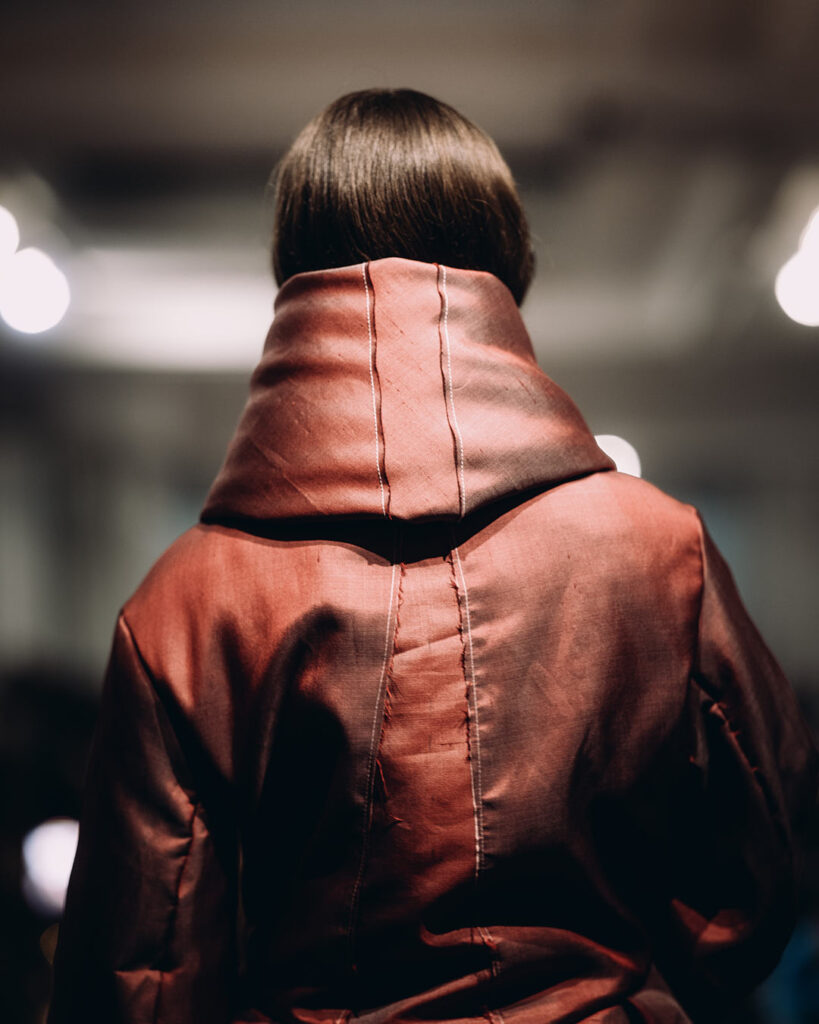
Naomi Hart’s “Unproductive Thinking” redefines fashion as a meditative art form where creativity flows from moments of stillness; in an age prone to prizing efficiency and rapid production, Hart’s approach is a refreshing pause, an introspective breath that allows her vision to flourish. Her collection, a blend of cinematic drama and tactile reality, invites us to reconsider what fashion can be—not just a garment, but a narrative, a piece of art that teeters between day and night, reality and dream. Through her thoughtful integration of surrealism and robust personal themes like the biker girl aesthetic, Hart not only pays homage to influences like David Lynch but also carves out a niche that is distinctly her own. Her garments act as a 3D-canvas, where the landscapes of the Peak District meet the energy of urban life, where the softness of geode
interiors contrasts with the tough spirit of leather. As she continues to explore the interplay between natural and synthetic, the expected and the surreal, Hart invites us all to find beauty in the depth of the unexplored, and to maybe start thinking a little bit less productively.

